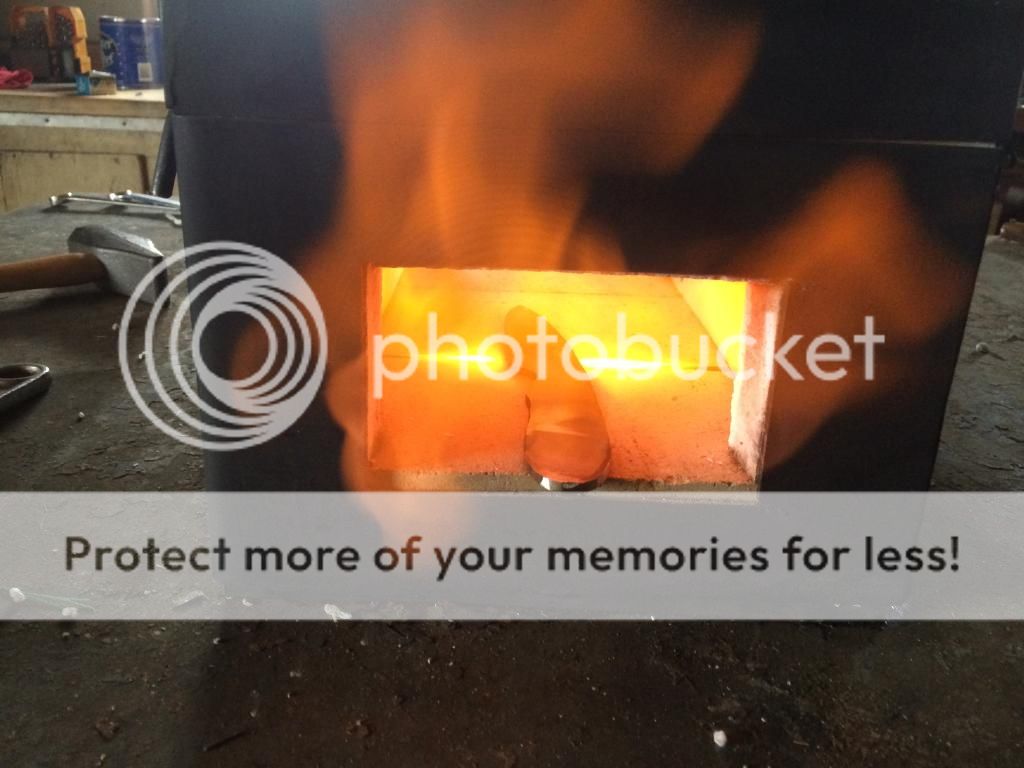- Joined
- Nov 11, 2011
- Messages
- 1,398
Hi - Here's my newest knife making tool -


It just came yesterday and I tried it out just a bit, first by "heat treating" a small scrap of 1084 (which is the only steel I use so far) just to get an idea of how much flame to use without burning anything up and that worked fine. I also heated a blank just enough to soften it so I could use my name stamp and that worked too. The instructions that came with it were pretty good for assembling the forge but did not give me a lot of info on using it to heat treat.
My questions for any of you who use an Majestic Forge are several;
Should flames really be coming out of the openings as in my picture above?
What gas pressure should I use for this two burner forge on 1084? I used 5 PSI based on guess work.
Should the flame come all the way down from the mixing tube to the liner? Mine does not and if it did it would really be pouring out both openings.
Any other hints on how to use it will be most helpful...but I've already decided it is way better than the improvised forge I was trying to use before.
Thanks
Steve


It just came yesterday and I tried it out just a bit, first by "heat treating" a small scrap of 1084 (which is the only steel I use so far) just to get an idea of how much flame to use without burning anything up and that worked fine. I also heated a blank just enough to soften it so I could use my name stamp and that worked too. The instructions that came with it were pretty good for assembling the forge but did not give me a lot of info on using it to heat treat.
My questions for any of you who use an Majestic Forge are several;
Should flames really be coming out of the openings as in my picture above?
What gas pressure should I use for this two burner forge on 1084? I used 5 PSI based on guess work.
Should the flame come all the way down from the mixing tube to the liner? Mine does not and if it did it would really be pouring out both openings.
Any other hints on how to use it will be most helpful...but I've already decided it is way better than the improvised forge I was trying to use before.
Thanks
Steve
